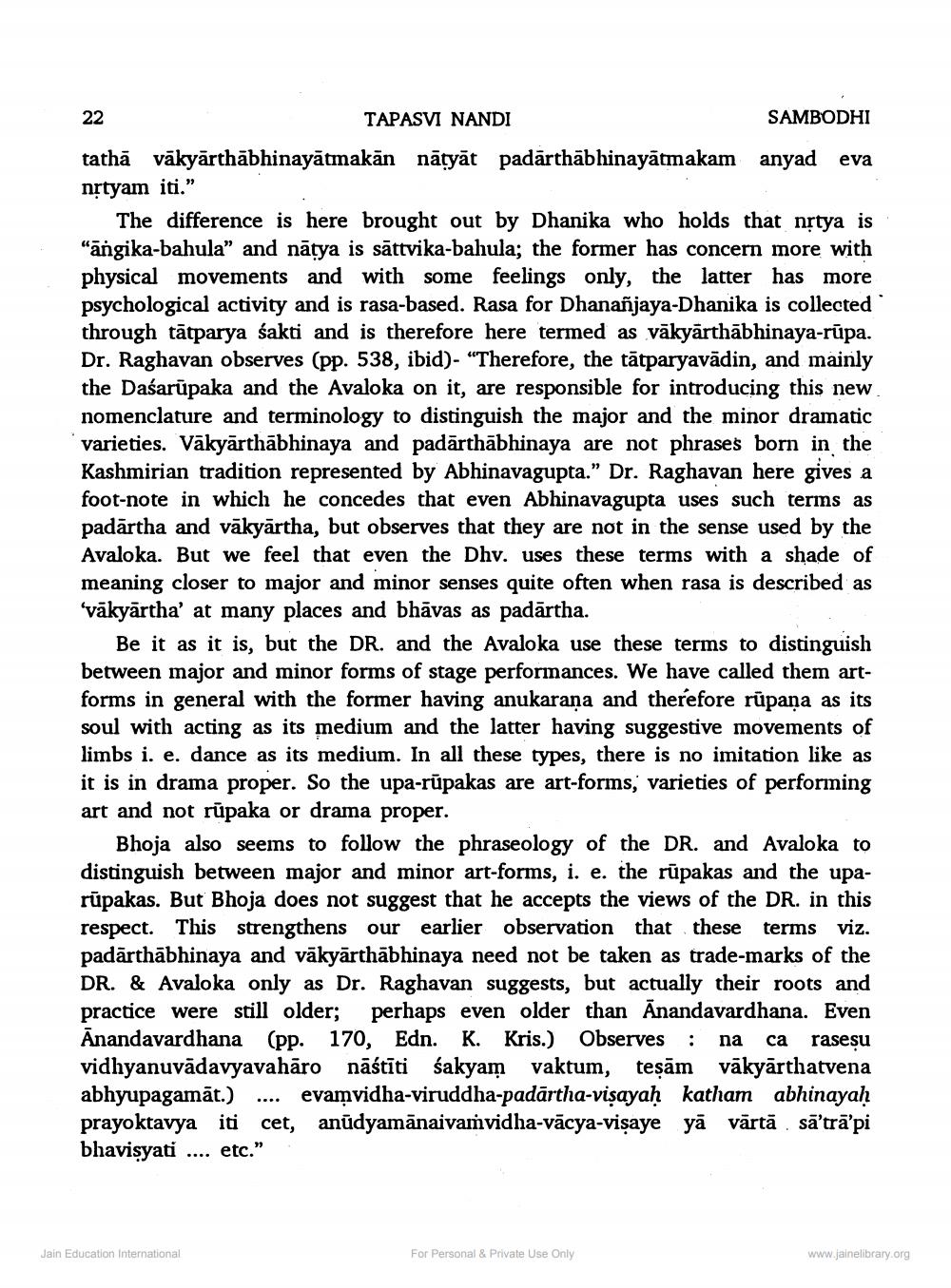________________
22 TAPASVI NANDI
SAMBODHI tathā vākyārthābhinayātmakān nātyāt padārthābhinayātmakam anyad eva nštyam iti."
The difference is here brought out by Dhanika who holds that nrtya is "angika-bahula" and nātya is sāttvika-bahula; the former has concern more with physical movements and with some feelings only, the latter has more psychological activity and is rasa-based. Rasa for Dhananjaya-Dhanika is collected through tātparya sakti and is therefore here termed as vākyārthābhinaya-rupa. Dr. Raghavan observes (pp. 538, ibid)- "Therefore, the tātparyavādin, and mainly the Dasarūpaka and the Avaloka on it, are responsible for introducing this new nomenclature and terminology to distinguish the major and the minor dramatic varieties. Vākyarthābhinaya and padārthābhinaya are not phrases born in the Kashmirian tradition represented by Abhinavagupta.” Dr. Raghavan here gives a foot-note in which he concedes that even Abhinavagupta uses such terms as padārtha and vākyārtha, but observes that they are not in the sense used by the Avaloka. But we feel that even the Dhv. uses these terms with a shade of meaning closer to major and minor senses quite often when rasa is described as 'vākyārtha' at many places and bhāvas as padārtha.
Be it as it is, but the DR. and the Avaloka use these terms to distinguish between major and minor forms of stage performances. We have called them artforms in general with the former having anukarana and therefore rüpana as its soul with acting as its medium and the latter having suggestive movements of limbs i. e. dance as its medium. In all these types, there is no imitation like as it is in drama proper. So the upa-rupakas are art-forms, varieties of performing art and not rūpaka or drama proper.
Bhoja also seems to follow the phraseology of the DR. and Avaloka to distinguish between major and minor art-forms, i. e. the rūpakas and the uparūpakas. But Bhoja does not suggest that he accepts the views of the DR. in this respect. This strengthens our earlier observation that these terms viz. padārthābhinaya and vākyārthābhinaya need not be taken as trade-marks of the DR. & Avaloka only as Dr. Raghavan suggests, but actually their roots and practice were still older; perhaps even older than Anandavardhana. Even Anandavardhana (pp. 170, Edn. K. Kris.) Observes : na ca rasesu vidhyanuvādavyavahāro nāśtīti sakyam vaktum, tesām vākyārthatvena abhyupagamāt.) .... evamvidha-viruddha-padārtha-visayaḥ katham abhinayah prayoktavya iti cet, anūdyamānaivamvidha-vācya-visaye yā vārtā sā'trā'pi bhavisyati .... etc."
Jain Education International
For Personal & Private Use Only
www.jainelibrary.org




